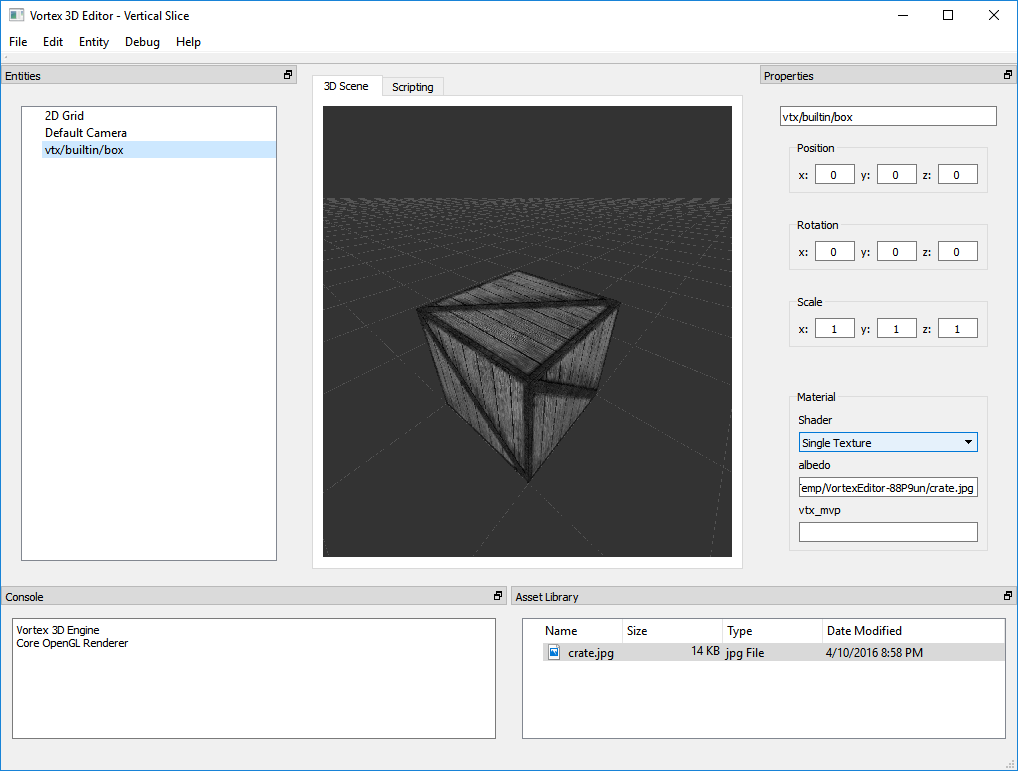Postprocessing Underpinnings
These past few weeks the majority of work went into establishing the underpinnings for frame postprocessing in the new V3 renderer.

Vortex 2.0 was the first version of the engine to introduce support for custom shaders and, although this opened the door to implement postprocessing effects, the API was cumbersome to use this way.
In general, the process would boil down to having two separate scene graphs and manually controlling the render-to-texture process. This would spill many engine details to user programs and was prone to breaking if the engine changed. This would also mean engine users would have to write hundreds of lines of code.
With V3 I want to make render-to-texture the default render mode. This means the engine will never render directly into the default framebuffer but, rather, we always render to an FBO object that we can then postprocess.
Architecting the renderer this way provides the opportunity to implement a myriad of effects that will up the visuals significantly while also keeping the nitty gritty details hidden under the hood.
The image above shows a postprocessed scene where the framebuffer contents were desaturated while being blit onto the screen, producing a grayscale image.
For the upcoming weeks, work will focus on building upon this functionality to develop the components necessary to support more advanced rendering in V3. Stay tuned for more!